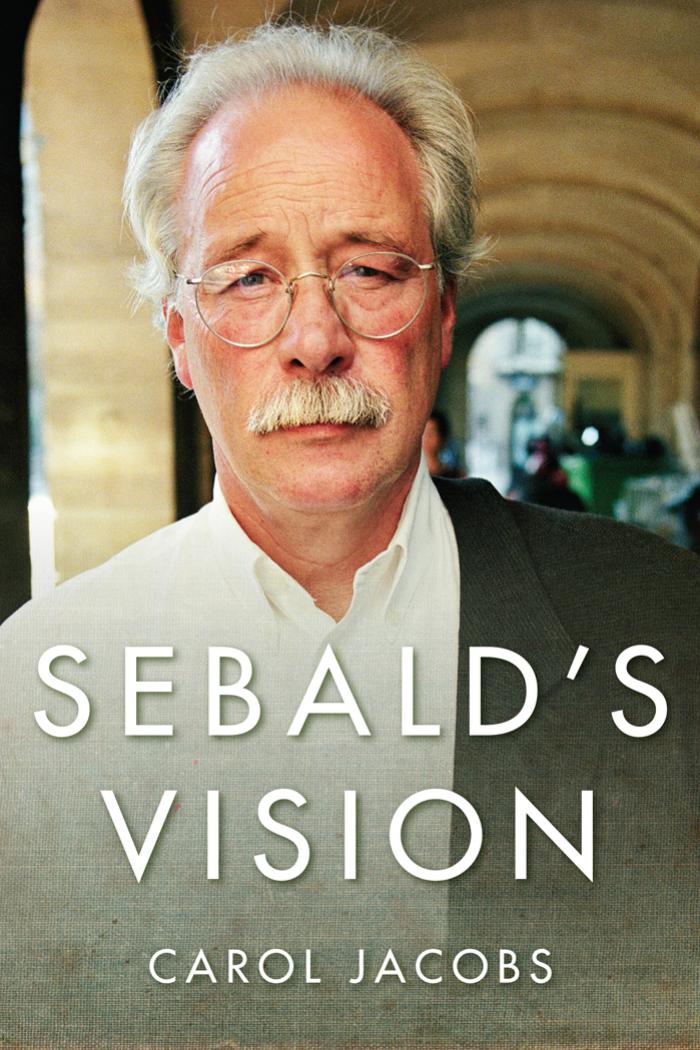Sebald's Vision by Carol Jacobs

Author:Carol Jacobs [Jacobs, Carol]
Language: eng
Format: epub, pdf
Tags: LIT006000, LITERARY CRITICISM / Semiotics & Theory, LIT004170, LITERARY CRITICISM / European / German
Publisher: Columbia University Press
Published: 2015-03-01T16:00:00+00:00
FIGURE 5.1 Time piece in three parts. Copyright © W. G. Sebald. Reprinted by permission of the Wylie Agency, LLC Austerlitz 99).
Perhaps this is what the single photograph from the Royal Observatory is meant to convey. Something of a counterpoint to the museum at Maisons-Alfort with its monstrous, unimaginable anomalies behind glass, the observatory is filled with “ingenious observational instruments and measuring devices, quadrants and sextants, chronometers and regulators, displayed in the glass cases [Vitrinen]” (Austerlitz 98E, 148G). Unlike the clocks in the Antwerp Centraal Station, each with its single, omnipotent eye surveying, ruling, and judging all in their domain, the single measuring device we encounter as image leaves us uncertain about what we have before us.
The two round pieces cite the pairs of eyes, some human, some animal, in the opening pages of Austerlitz. Or they come to us like a pair of glasses in which one lens lies strangely darkened, perhaps like the right eye of the narrator. In the image, actually, three pieces are laid out carefully for display. On the right we see what looks like the face of a pocket watch, but with three unfamiliar, single dials, each occupied by a single hand. In contrast to this white-faced instrument, on the left lies a smaller piece. One wants to believe it the movement that, if properly placed in the other’s casing, might drive those hands of measure. Their juxtaposition seems to promise that we might make time work, even if we fail to understand how the various dials function and whether they are calibrated to that which we can comprehend. Between them sits a crank of sorts in the shape of a sideward z. Its function is elusive, the face of the timepiece, after all, already has the traditional knob with which to wind and set it. Might the z-shaped piece serve to connect the two? Why does it provocatively figure as something of an approximation sign (~) between the round pieces? On the face of it, they are neither the same nor of a piece, and yet, nevertheless, we sense the insistence on their relationship.
IVER GROVE
The puzzle image appears alone, unexplained, unrelated in any clear way to either Austerlitz or the narrator. But perhaps it finds its place less in relation to them or even to its kin in the observatory glass cases than to other images, both visual and linguistic, that soon appear as the narrative continues. Shortly after their visit to Greenwich, Austerlitz tells of his visits to the collapsing houses of the English countryside in his student days. Iver Grove is at once a house doomed like the others to dilapidation and yet a place in which time has been made to stand still. James Mallord Ashman brings his visitors to rooms that had been sealed off for years on end:
And when these partitions . . . were taken down in the autumn of 1951 or 1952, and he entered the nursery again for the first time in ten years, it wouldn’t have taken much, said Ashman, to overset his reason altogether.
Download
This site does not store any files on its server. We only index and link to content provided by other sites. Please contact the content providers to delete copyright contents if any and email us, we'll remove relevant links or contents immediately.
| African | Asian |
| Australian & Oceanian | Canadian |
| Caribbean & Latin American | European |
| Jewish | Middle Eastern |
| Russian | United States |
4 3 2 1: A Novel by Paul Auster(12289)
The handmaid's tale by Margaret Atwood(7681)
Giovanni's Room by James Baldwin(7197)
Asking the Right Questions: A Guide to Critical Thinking by M. Neil Browne & Stuart M. Keeley(5649)
Big Magic: Creative Living Beyond Fear by Elizabeth Gilbert(5615)
Ego Is the Enemy by Ryan Holiday(5295)
The Body: A Guide for Occupants by Bill Bryson(4976)
On Writing A Memoir of the Craft by Stephen King(4863)
Ken Follett - World without end by Ken Follett(4646)
Adulting by Kelly Williams Brown(4488)
Bluets by Maggie Nelson(4476)
Eat That Frog! by Brian Tracy(4436)
Guilty Pleasures by Laurell K Hamilton(4362)
The Poetry of Pablo Neruda by Pablo Neruda(4041)
Alive: The Story of the Andes Survivors by Piers Paul Read(3970)
White Noise - A Novel by Don DeLillo(3955)
Fingerprints of the Gods by Graham Hancock(3943)
The Book of Joy by Dalai Lama(3903)
The Bookshop by Penelope Fitzgerald(3777)
